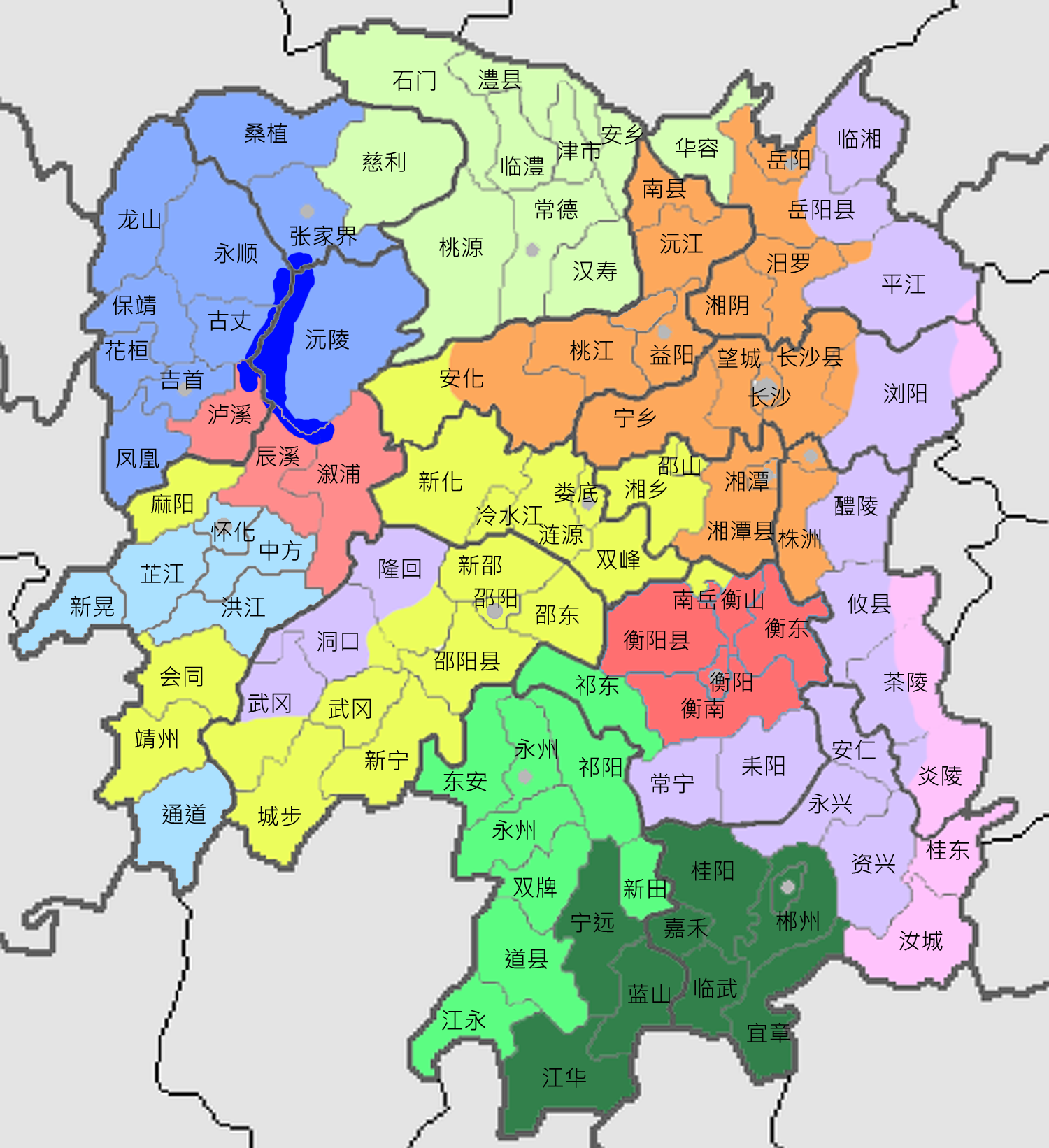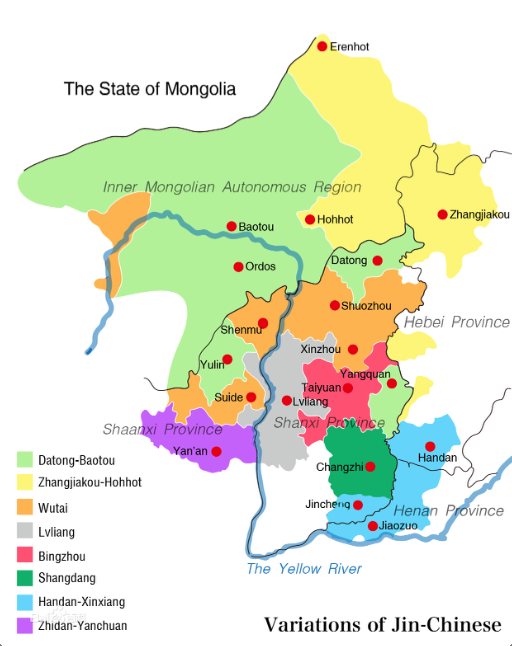|
Sinitic Languages
The Sinitic languages (漢語族/汉语族), often synonymous with "Chinese languages", are a language group, group of East Asian analytic languages that constitute the major branch of the Sino-Tibetan languages, Sino-Tibetan language family. It is frequently proposed that there is a primary split between the Sinitic languages and the rest of the family (the Tibeto-Burman languages). This view is rejected by a number of researchers but has found phylogenetic support among others. The Greater Bai languages, whose classification is difficult, may be an offshoot of Old Chinese and thus Sinitic; otherwise Sinitic is defined only by the many varieties of Chinese unified by written Chinese, a common writing system, and usage of the term "Sinitic" may reflect the linguistic view that Chinese language, Chinese constitutes a family of distinct languages, rather than variants of a single language. Population The total speakers of the Chinese macrolanguage is 1,521,943,700, of which about ... [...More Info...] [...Related Items...] OR: [Wikipedia] [Google] [Baidu] |
Greater China
Greater China is an informal geographical area that shares commercial and cultural ties with the Han Chinese people. The notion of "Greater China" refers to the area that usually encompasses Mainland China, Hong Kong, Macau, and Taiwan in East Asia, places where the majority are culturally and ethnically Han Chinese. Some analysts may also include places which have predominantly ethnic Chinese population such as Singapore. The term can be generalised to encompass "linkages among regional Chinese communities". Usage Multinational corporations frequently use the term to name their regional headquarters. For example, P&G uses it to name its regional headquarter in Guangzhou that also operates in Hong Kong and Taipei, Taiwan. Apple uses it for its regional headquarters in Shanghai. The term is often used to avoid invoking sensitivities over the political status of Taiwan. The term has also been used in reference to Chinese irredentism in nationalist contexts, such as the notion ... [...More Info...] [...Related Items...] OR: [Wikipedia] [Google] [Baidu] |
Tibeto-Burman Languages
The Tibeto-Burman languages are the non- Sinitic members of the Sino-Tibetan language family, over 400 of which are spoken throughout the Southeast Asian Massif ("Zomia") as well as parts of East Asia and South Asia. Around 60 million people speak Tibeto-Burman languages. The name derives from the most widely spoken of these languages, Burmese and the Tibetic languages, which also have extensive literary traditions, dating from the 12th and 7th centuries respectively. Most of the other languages are spoken by much smaller communities, and many of them have not been described in detail. Though the division of Sino-Tibetan into Sinitic and Tibeto-Burman branches (e.g. Benedict, Matisoff) is widely used, some historical linguists criticize this classification, as the non-Sinitic Sino-Tibetan languages lack any shared innovations in phonology or morphology to show that they comprise a clade of the phylogenetic tree. History During the 18th century, several scholars noticed ... [...More Info...] [...Related Items...] OR: [Wikipedia] [Google] [Baidu] |
Gan Chinese
Gan, Gann or Kan is a group of Sinitic languages spoken natively by many people in the Jiangxi province of China, as well as significant populations in surrounding regions such as Hunan, Hubei, Anhui, and Fujian. Gan is a member of the Sinitic languages of the Sino-Tibetan language family, and Hakka is the closest Chinese variety to Gan in terms of phonetics. Different dialects of Gan exist; the Nanchang dialect is usually taken as representative. Classification Like all other varieties of Chinese, there is a large amount of mutual unintelligibility between Gan Chinese and other varieties. Within the variation of Chinese dialects, Gan has more similarities with Mandarin than with Yue or Min. However, Gan clusters more with Xiang than Mandarin. Name * ''Gan'': the most common name. Also spelled ''Gann'' to reflect the falling tone of the name in Mandarin. Scholars in mainland China use ''Gan'' or ''Gan dialect.'' * ''Jiāngxīhuà'' ("Jiangxi language") is commonly u ... [...More Info...] [...Related Items...] OR: [Wikipedia] [Google] [Baidu] |
Xiang Chinese
Xiang or Hsiang (; ); Changsha Xiang: ''sian1 y3'', also known as Hunanese (), is a group of linguistically similar and historically related Sinitic languages, spoken mainly in Hunan province but also in northern Guangxi and parts of neighboring Guizhou and Hubei provinces. Scholars divided Xiang into five subgroups, Chang-Yi, Lou-Shao, Hengzhou, Chen-Xu and Yong-Quan. Among those, Lou-shao, also known as Old Xiang, still exhibits the three-way distinction of Middle Chinese obstruents, preserving the voiced stops, fricatives, and affricates. Xiang has also been heavily influenced by Mandarin, which adjoins three of the four sides of the Xiang speaking territory, and Gan in Jiangxi Province, from where a large population immigrated to Hunan during the Ming Dynasty. Xiang-speaking Hunanese people have played an important role in Modern Chinese history, especially in those reformatory and revolutionary movements such as the Self-Strengthening Movement, Hundred Days' Refo ... [...More Info...] [...Related Items...] OR: [Wikipedia] [Google] [Baidu] |
Hakka Chinese
Hakka (, , ) forms a language group of varieties of Chinese, spoken natively by the Hakka people throughout Southern China and Taiwan and throughout the diaspora areas of East Asia, Southeast Asia and in overseas Chinese communities around the world. Due to its primary usage in scattered isolated regions where communication is limited to the local area, Hakka has developed numerous varieties or dialects, spoken in different provinces, such as Guangdong, Guangxi, Hainan, Fujian, Sichuan, Hunan, Jiangxi and Guizhou, as well as in Taiwan, Singapore, Malaysia, Thailand and Indonesia. Hakka is not mutually intelligible with Yue, Wu, Southern Min, Mandarin or other branches of Chinese, and itself contains a few mutually unintelligible varieties. It is most closely related to Gan and is sometimes classified as a variety of Gan, with a few northern Hakka varieties even being partially mutually intelligible with southern Gan. There is also a possibility that the similaritie ... [...More Info...] [...Related Items...] OR: [Wikipedia] [Google] [Baidu] |
Jin Chinese
Jin (; ) is a proposed group of varieties of Chinese spoken by roughly 63 million people in northern China, including most of Shanxi province, much of central Inner Mongolia, and adjoining areas in Hebei, Henan, and Shaanxi provinces. The status of Jin is disputed among linguists; some prefer to include it within Mandarin, but others set it apart as a closely related, but separate sister-group. Classification After the concept Mandarin Chinese was proposed, the Jinnish dialects were universally included within it, mainly because Chinese linguists paid little attention to these dialects at the time. In order to promote Standard Mandarin in the early days of People's Republic of China, linguists started to research various dialects in Shanxi, comparing these dialects with Standard Mandarin for helping the locals to learn it more quickly. During this period, a few linguists discovered some unique features of Jin Chinese that do not exist in other northern Mandarin dialects, plantin ... [...More Info...] [...Related Items...] OR: [Wikipedia] [Google] [Baidu] |
Min Chinese
Min (; BUC: ''Mìng-ngṳ̄'') is a broad group of Sinitic languages spoken by about 30 million people in Fujian province as well as by the descendants of Min speaking colonists on Leizhou peninsula and Hainan, or assimilated natives of Chaoshan, parts of Zhongshan, three counties in southern Wenzhou, Zhoushan archipelago, and Taiwan. The name is derived from the Min River in Fujian, which is also the abbreviated name of Fujian Province. Min varieties are not mutually intelligible with one another nor with any other variety of Chinese (such as Mandarin, Cantonese, Wu, Gan, Xiang, or Hakka). There are many Min speakers among overseas Chinese in Southeast Asia. The most widely spoken variety of Min outside Fujian is Southern Min ( Min Nan), also known as Hokkien-Taiwanese (which includes Taiwanese and Amoy). Many Min languages have retained notable features of the Old Chinese language, and there is linguistic evidence that not all Min varieties are directly descended f ... [...More Info...] [...Related Items...] OR: [Wikipedia] [Google] [Baidu] |
Wu Chinese
The Wu languages (; Wu romanization and IPA: ''wu6 gniu6'' [] ( Shanghainese), ''ng2 gniu6'' [] (Suzhounese), Mandarin pinyin and IPA: ''Wúyǔ'' []) is a major group of Sinitic languages spoken primarily in Shanghai, Zhejiang, Zhejiang Province, and the part of Jiangsu, Jiangsu Province south of the Yangtze River, which makes up the cultural region of Wu. The Suzhou dialect was the prestige dialect of Wu as of the 19th century, and formed the basis of Wu's koiné dialect, Shanghainese, at the turn of the 20th century. Speakers of various Wu languages sometimes inaccurately labelled their mother tongue as "Shanghainese" when introduced to foreigners. The languages of Northern Wu are mutually intelligible with each other, while those of Southern Wu are not. Historical linguists view Wu of great significance because it distinguished itself from other varieties of Chinese by preserving the voiced initials of the ancient Middle Chinese and by preserving the checked ton ... [...More Info...] [...Related Items...] OR: [Wikipedia] [Google] [Baidu] |
Yue Chinese
Yue () is a group of similar Sinitic languages spoken in Southern China, particularly in Liangguang (the Guangdong and Guangxi provinces). The name Cantonese is often used for the whole group, but linguists prefer to reserve that name for the variety used in Guangzhou (Canton), Wuzhou (Ngchow), Hong Kong and Macau, which is the prestige dialect. Taishanese, from the coastal area of Jiangmen (Kongmoon) located southwest of Guangzhou, was the language of most of the 19th-century emigrants from Guangdong to Southeast Asia and North America. Most later migrants have been speakers of Cantonese. Yue varieties are not mutually intelligible with other varieties of Chinese. They are among the most conservative varieties with regard to the final consonants and tonal categories of Middle Chinese, but have lost several distinctions in the initial consonants and medial glides that other Chinese varieties have retained. Naming The prototypical use of the name ''Cantonese'' in Engl ... [...More Info...] [...Related Items...] OR: [Wikipedia] [Google] [Baidu] |
Mandarin Chinese
Mandarin (; ) is a group of Chinese (Sinitic) dialects that are natively spoken across most of northern and southwestern China. The group includes the Beijing dialect, the basis of the phonology of Standard Chinese, the official language of China. Because Mandarin originated in North China and most Mandarin dialects are found in the north, the group is sometimes referred to as Northern Chinese (). Many varieties of Mandarin, such as those of the Southwest (including Sichuanese) and the Lower Yangtze, are not mutually intelligible with the standard language (or are only partially intelligible). Nevertheless, Mandarin as a group is often placed first in lists of languages by number of native speakers (with nearly one billion). Mandarin is by far the largest of the seven or ten Chinese dialect groups; it is spoken by 70 percent of all Chinese speakers over a large geographical area that stretches from Yunnan in the southwest to Xinjiang in the northwest and Heilongji ... [...More Info...] [...Related Items...] OR: [Wikipedia] [Google] [Baidu] |
Language Cluster
A dialect continuum or dialect chain is a series of language varieties spoken across some geographical area such that neighboring varieties are mutually intelligible, but the differences accumulate over distance so that widely separated varieties may not be. This is a typical occurrence with widely spread languages and language families around the world, when these languages did not spread recently. Some prominent examples include the Indo-Aryan languages across large parts of India, varieties of Arabic across north Africa and southwest Asia, the Turkic languages, the Chinese languages or dialects, and subgroups of the Romance, Germanic and Slavic families in Europe. Leonard Bloomfield used the name dialect area. Charles F. Hockett used the term L-complex. Dialect continua typically occur in long-settled agrarian populations, as innovations spread from their various points of origin as waves. In this situation, hierarchical classifications of varieties are impractical ... [...More Info...] [...Related Items...] OR: [Wikipedia] [Google] [Baidu] |





